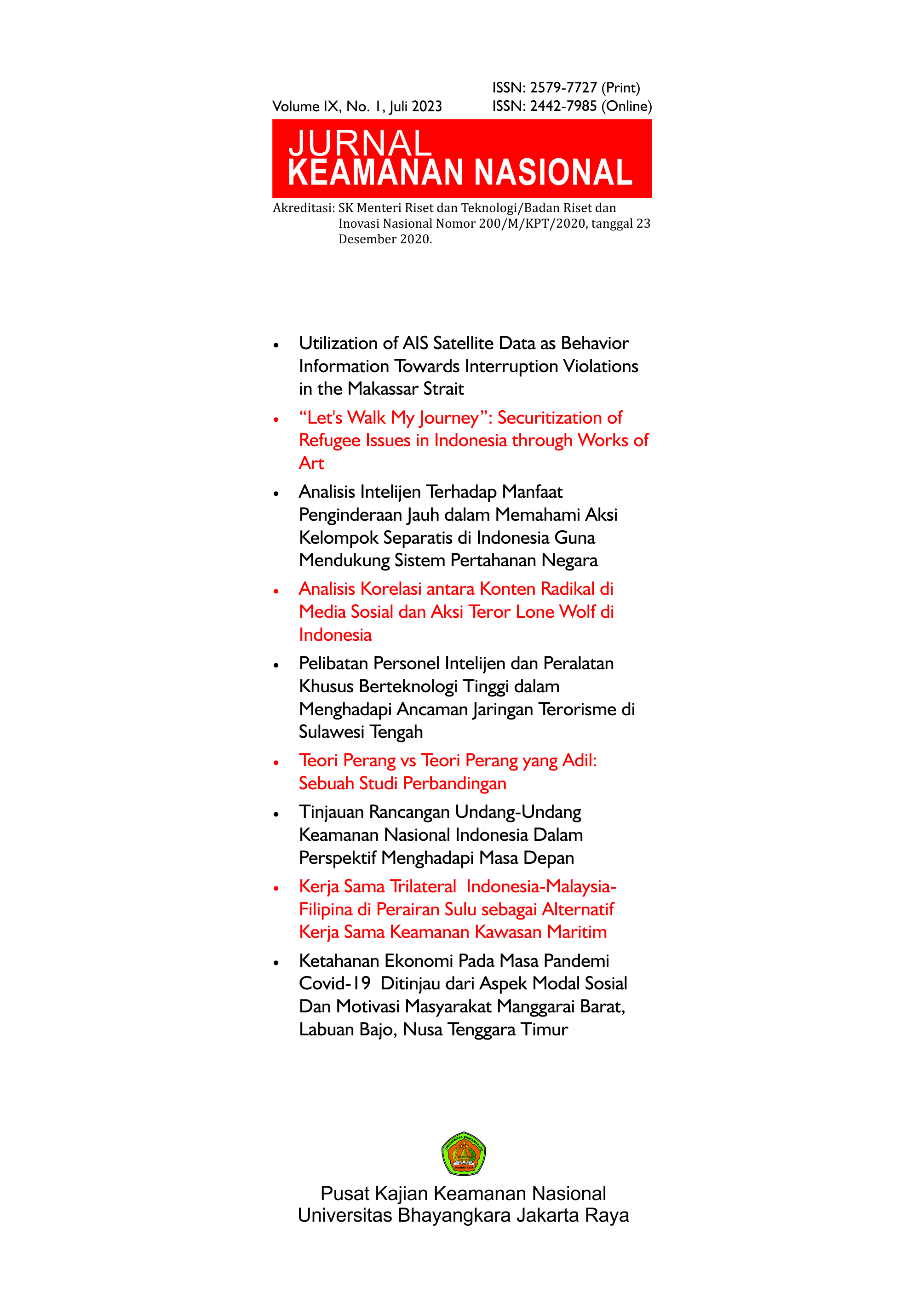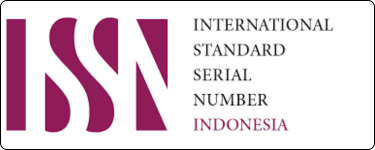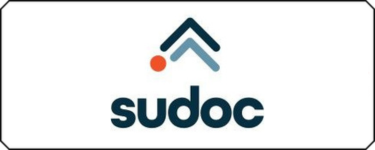Analisis Korelasi antara Konten Radikal di Media Sosial dan Aksi Teror Lone Wolf di Indonesia
Keywords:
social media, terror lone wolf, radical contentAbstract
From 2006 until 2021,13 lone wolf terror attacks have taken place in Indonesia with 7 out of 13 cases indicating that the perpetrators of these attacks have been radicalized through social media content. Social media is apparently effective when it is being used as propaganda since it is flexible, easy to access, and affordable. The social media users who are unable to filter the information and lack critical thinking are vulnerable to such radical content. The vulnerability becomes higher since the transnational groups with
their radical understanding benefit social media as their propaganda tools. Then, several lone wolf terror cases in Indonesia prove that the spread of the radical content throughout the social media can encourage individuals to perpetrate terror attacks independently as these individuals have been inspired by the information and the instruction available on the Internet. The lone wolf perpetrators can launch their attacks without any coordination or affiliation with other parties. Hence, the spread of the radical content over social media that triggers the lone wolf terror occurrence is a dangerous
phenomenon and thereby there should be an in-depth investigation to identify the root causes and preventive efforts. With regards to the statement, the current study aims to review the lone wolf terror phenomenon as the terror has been triggered by exposure to the radical understanding over social media. In conducting the review, several theories have been adopted and these theories consist of radicalization, social media, lone wolf terror, broadcasting intent, early detection, and counter-radical narrative. The results of the study thus propose a strategy for preventing the spread of radical content over social media through the cooperation between the state actors and the non-state actors.
Downloads

Downloads
Published
Issue
Section
License
Please read and understand the copyright terms for submissions to this journal.
Copyright Notice
The Jurnal Keamanan Nasional is under the Creative Commons Attribution 4.0 International (CC-BY 4.0) License, according to which:
1) Authors retain copyright and grant the journal the right to first publication, with the work simultaneously licensed under the Creative Commons Attribution (CC-BY 4.0) that allows the sharing of articles published with the acknowledgement of authorship and the initial publication in this journal.
2) The authors are authorized to make additional contracts separately for distribution of the version of the work published in this journal (for example, publication in an institutional repository or as a chapter of the book), as long as there is recognition of authorship and initial publication in this journal.
3) Authors are authorized and encouraged to publish and distribute their work online (for example, in institutional repositories or on their personal pages) at any time before or during the editorial process, as it increases the impact and reference of the published work.












